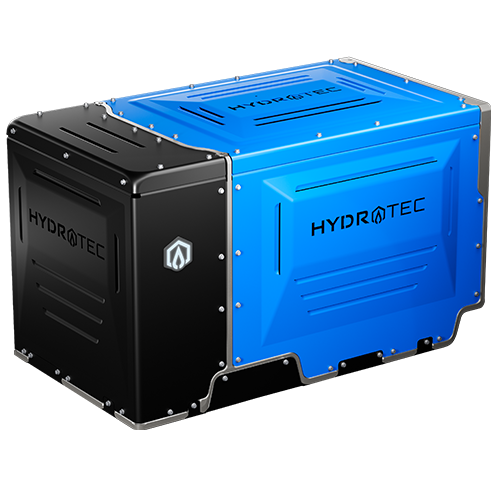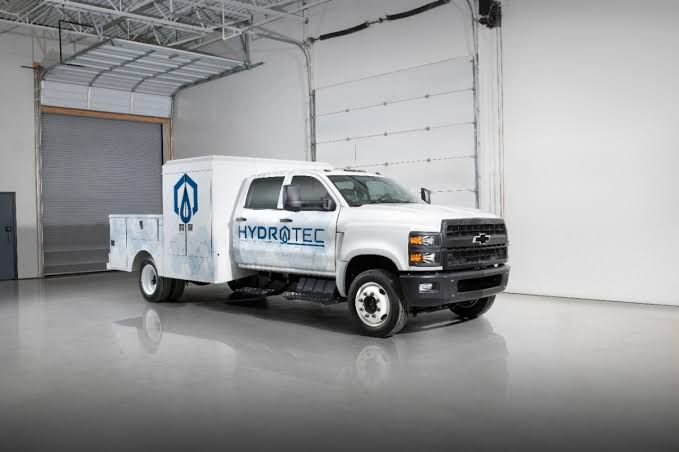When Mary Barra mentioned "alternative zero-emission solutions" during GM's Q1 2025 earnings call without prompting, attentive analysts heard the subtle but unmistakable sound of corporate priorities shifting.
While most of the automotive world remains fixated on battery-electric vehicles, General Motors has been quietly accelerating its hydrogen fuel cell program in ways that suggest a much broader application than previously disclosed, including potential consumer vehicles that could complement or even compete with its Ultium-powered EVs.
The evidence of this hydrogen expansion has been hiding in plain sight. GM's Hydrotec fuel cell business, originally positioned as a commercial vehicle solution, has suddenly gained unexpected momentum in military and government applications.
The U.S. Department of Energy recently awarded GM $30 million to advance high-speed fuel cell stack manufacturing, as part of broader funding for hydrogen projects, a project that sources say shares remarkable similarities with the automaker's canceled Hummer EV pickup platform.
Meanwhile, GM's previously announced fuel cell Class 8 truck program with Navistar has mysteriously slipped its timeline, suggesting the technology is being redirected toward more immediately viable applications.
The Lithium Hedge

GM's renewed hydrogen interest comes as the auto industry faces growing concerns about long-term lithium supplies. While battery technology continues to dominate zero-emission strategies, mining analysts warn that projected lithium demand could outstrip global production capacity as early as 2028.
Actually, the latest reports suggest the opposite—lithium supply is expected to exceed demand through 2028. While demand for lithium-ion batteries is growing rapidly, particularly in electric vehicles and energy storage, analysts predict an oversupply due to increased production capacity and lower raw material costs.
GM's strategic planning documents, reviewed by industry analysts, reveal contingency plans for "material-constrained scenarios" that would require alternative powertrain solutions. Hydrogen presents an elegant solution to a possible crisis.
Unlike lithium-ion batteries that require scarce materials like cobalt and nickel, fuel cells primarily use platinum (which GM has been stockpiling) and can leverage existing natural gas infrastructure for hydrogen production.
Perhaps most importantly, fuel cell vehicles can be refueled in minutes rather than charged for hours. This presents a critical advantage for fleet operators and a potential selling point for luxury consumers.
The Military-Industrial Bridge
GM's hydrogen strategy appears to be following a deliberate path from military to commercial to consumer applications.
The company's defense division has become an unlikely proving ground for fuel cell technology, with three active programs: The DOE-funded light vehicle program mentioned earlier, a silent-running partnership with the U.S. Army to develop hydrogen-powered reconnaissance vehicles, and a naval applications project focused on submarine support equipment.

While there is no confirmed program specifically focused on submarine support equipment, GM’s HYDROTEC fuel cell technology has been explored for maritime applications.
This military work provides GM with three key advantages: government-funded R&D, real-world testing under extreme conditions, and a pathway to commercialize the technology without bearing full development costs. Industry insiders suggest the knowledge gained from these programs is already being applied to civilian fuel cell development, particularly in the areas of cold-weather performance and rapid refueling—two traditional weak points of hydrogen technology.
While GM remains publicly committed to battery-electric vehicles for its light-duty consumer lineup, patent filings tell a different story.
Recent applications reveal designs for hydrogen fuel cell systems sized for passenger vehicles, including an intriguing "dual-energy" architecture that could allow vehicles to switch between battery and fuel cell power depending on conditions.
The most telling clue may come from GM's recent trademark activity. The company has quietly renewed protections for the "HydroGen" name—previously used for its 2000s-era fuel cell concept vehicles—while filing new trademarks around hydrogen-related branding. Combined with rumors of a fuel cell development mule spotted testing at GM's Milford Proving Grounds (disguised as a Silverado EV), these moves suggest consumer hydrogen vehicles may be closer to reality than the company has publicly acknowledged.
The Strategic Calculus

GM's hydrogen strategy represents a classic risk diversification play. By maintaining viable fuel cell technology while publicly pushing battery-electric vehicles, the company positions itself to pivot quickly if lithium supplies become constrained or politically problematic, hydrogen infrastructure receives unexpected government support, fleet operators demand faster refueling than batteries can provide, or cold-weather performance limitations hinder battery-EV adoption in northern markets.
This hedging strategy explains why GM continues investing in hydrogen even as it spends billions on Ultium battery plants. The company appears to be preparing for a future where multiple zero-emission technologies coexist, with batteries dominating some segments and fuel cells others.
GM's cautious hydrogen messaging reflects the difficult balance it must strike. While fuel cell technology could solve several challenges facing battery-EVs, the company cannot appear to waver in its commitment to electrification without spooking Wall Street. This explains Barra's careful phrasing, acknowledging "alternative zero-emission solutions" without elaborating, and GM's decision to house much of its hydrogen work in the less-scrutinized defense division.
The approach mirrors Toyota's controversial hydrogen strategy, but with a crucial difference: GM isn't betting against batteries—it's preparing to use both technologies where they make the most sense. This dual-path strategy could give GM unexpected flexibility as the auto industry's zero-emission future takes shape.
As battery and hydrogen technologies continue evolving, GM appears determined to keep its options open. The company that once bet everything on electric vehicles may be preparing to surprise the industry once again, this time by proving that hydrogen still has a place in the zero-emission future.